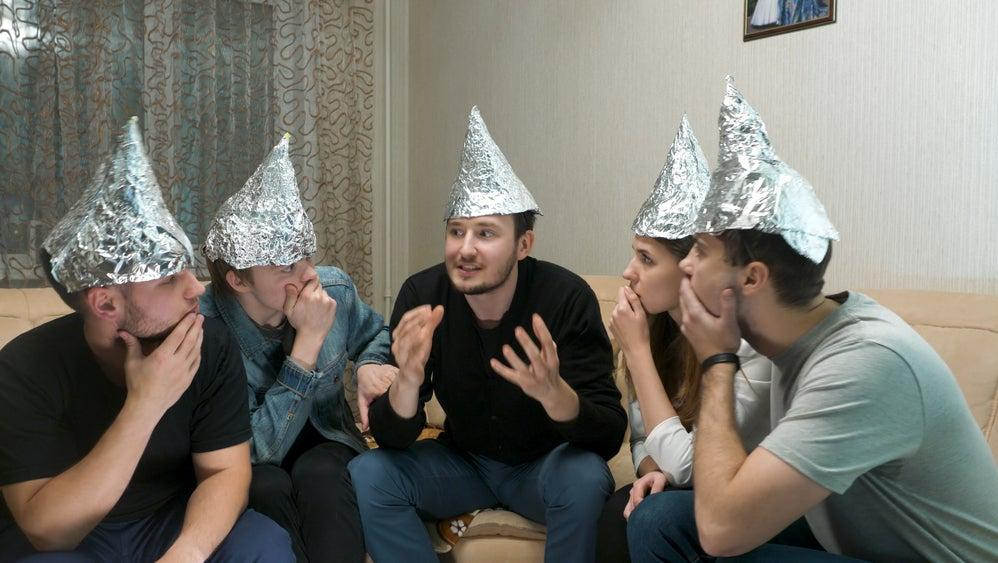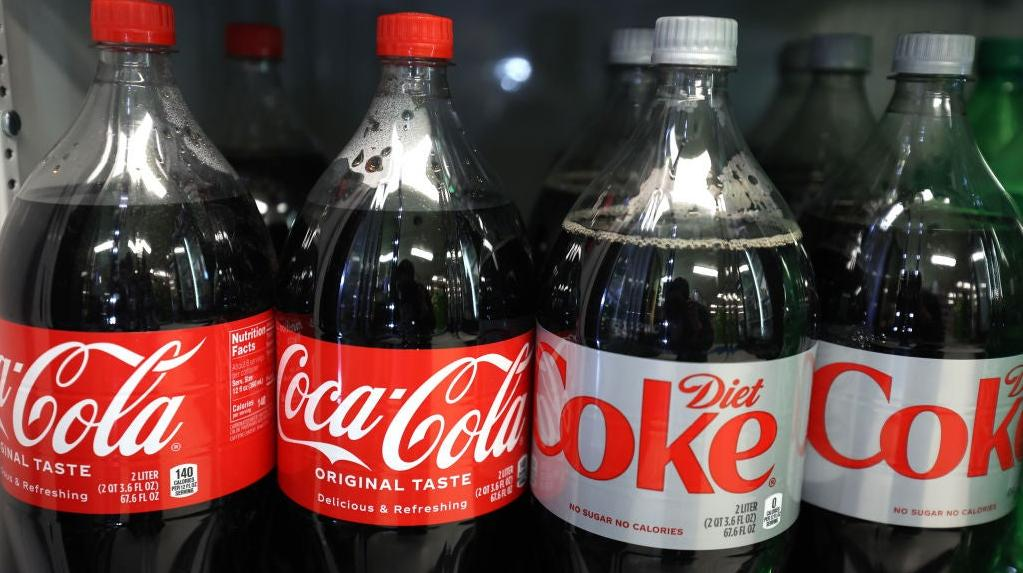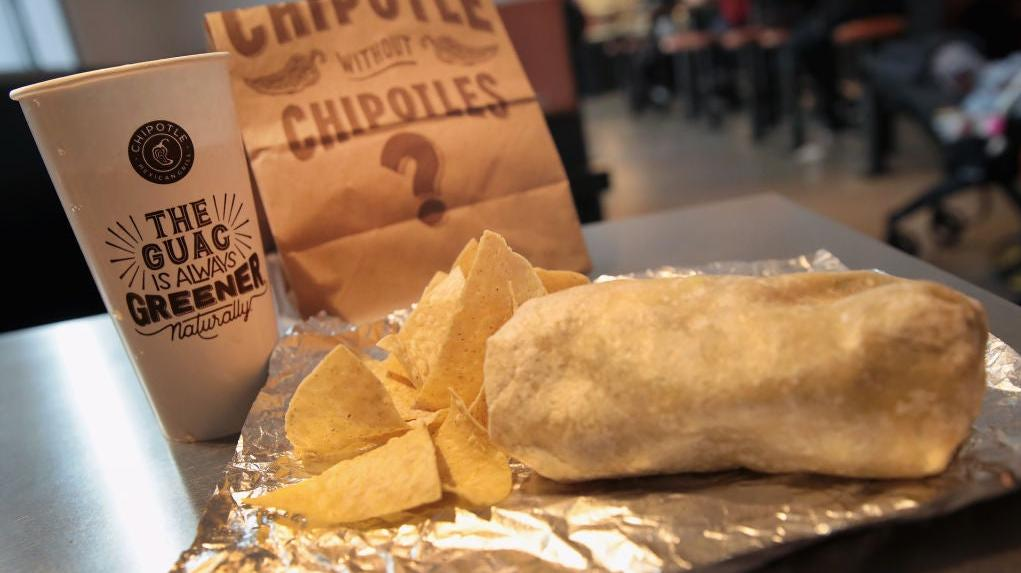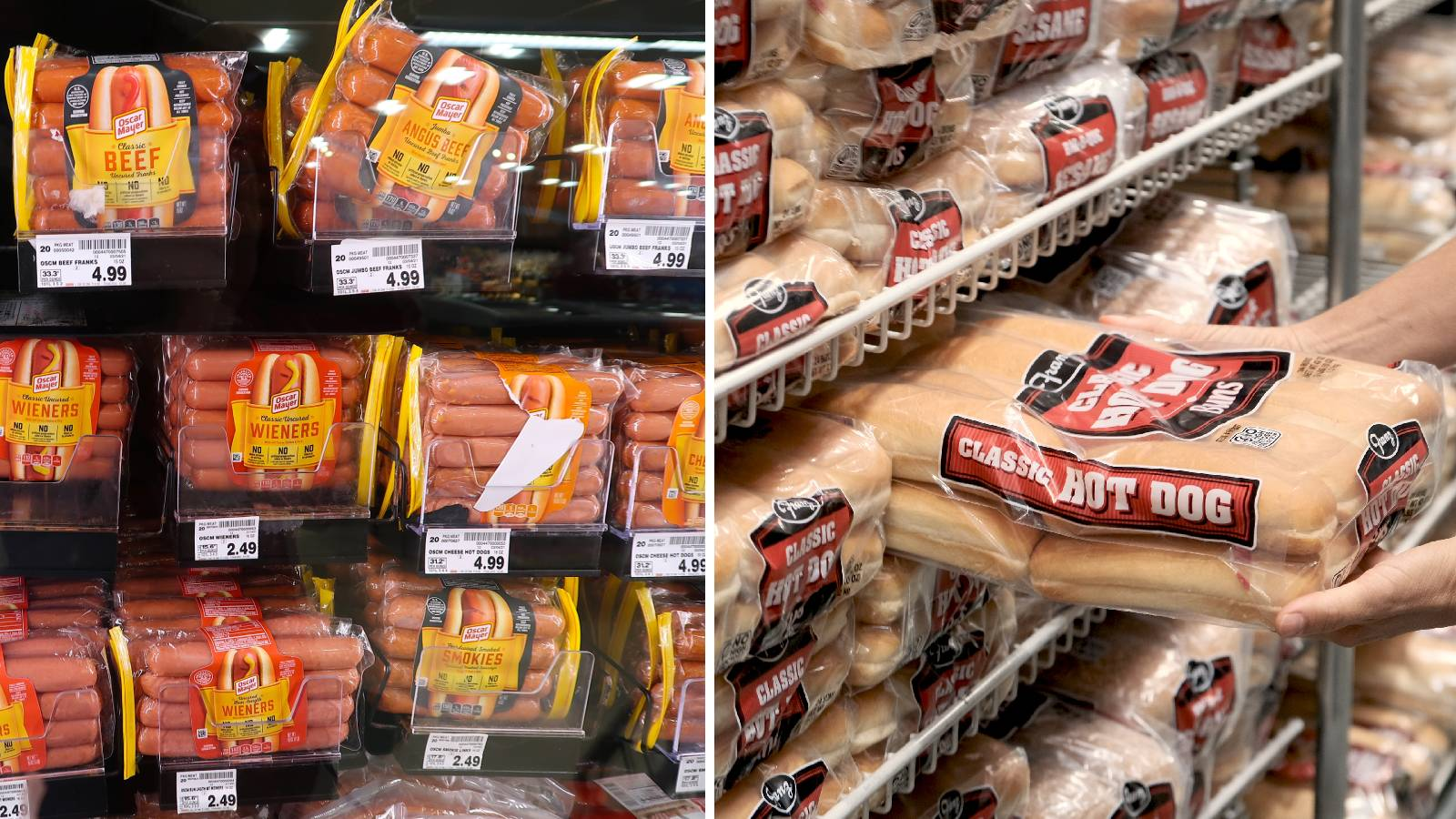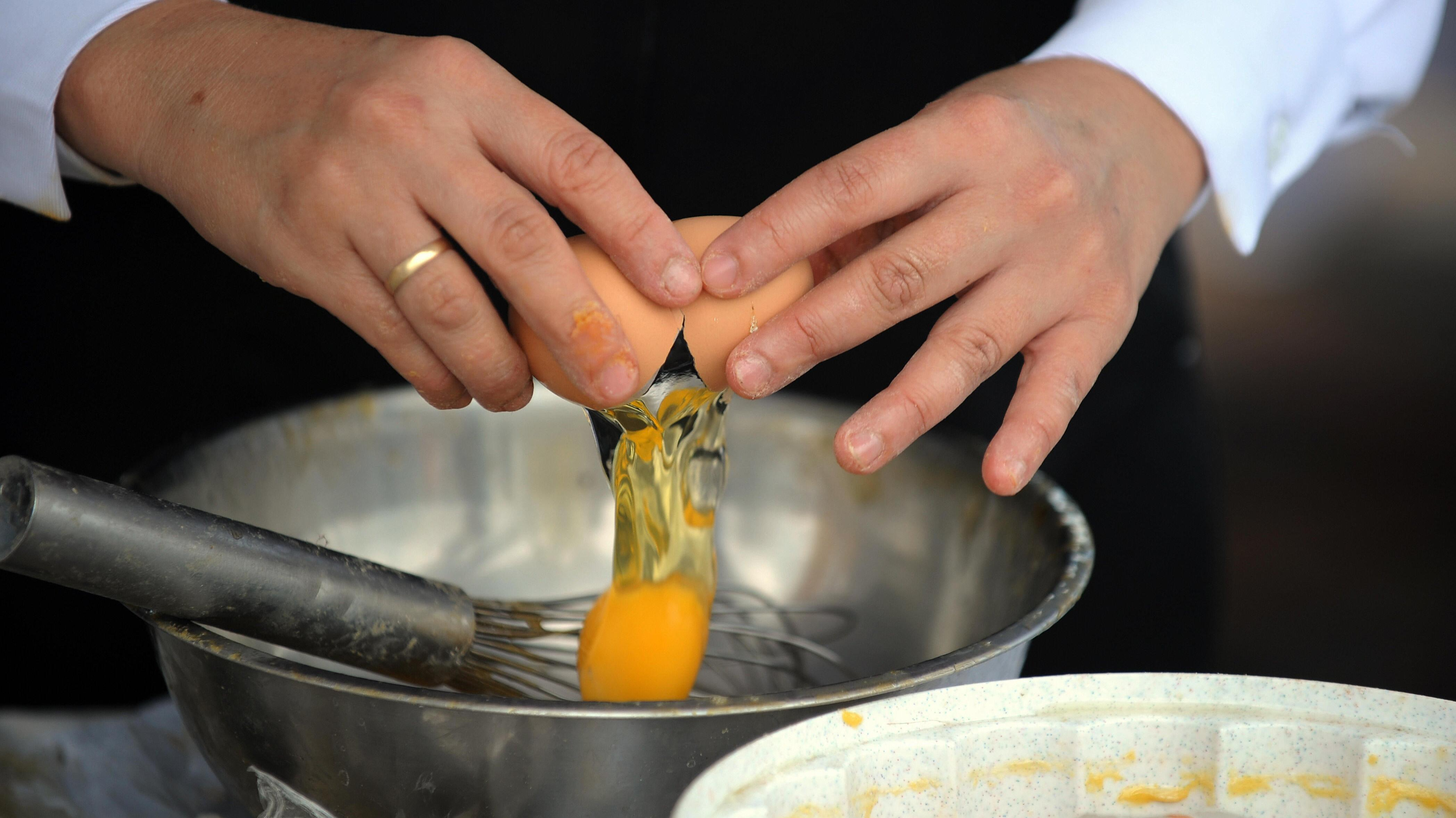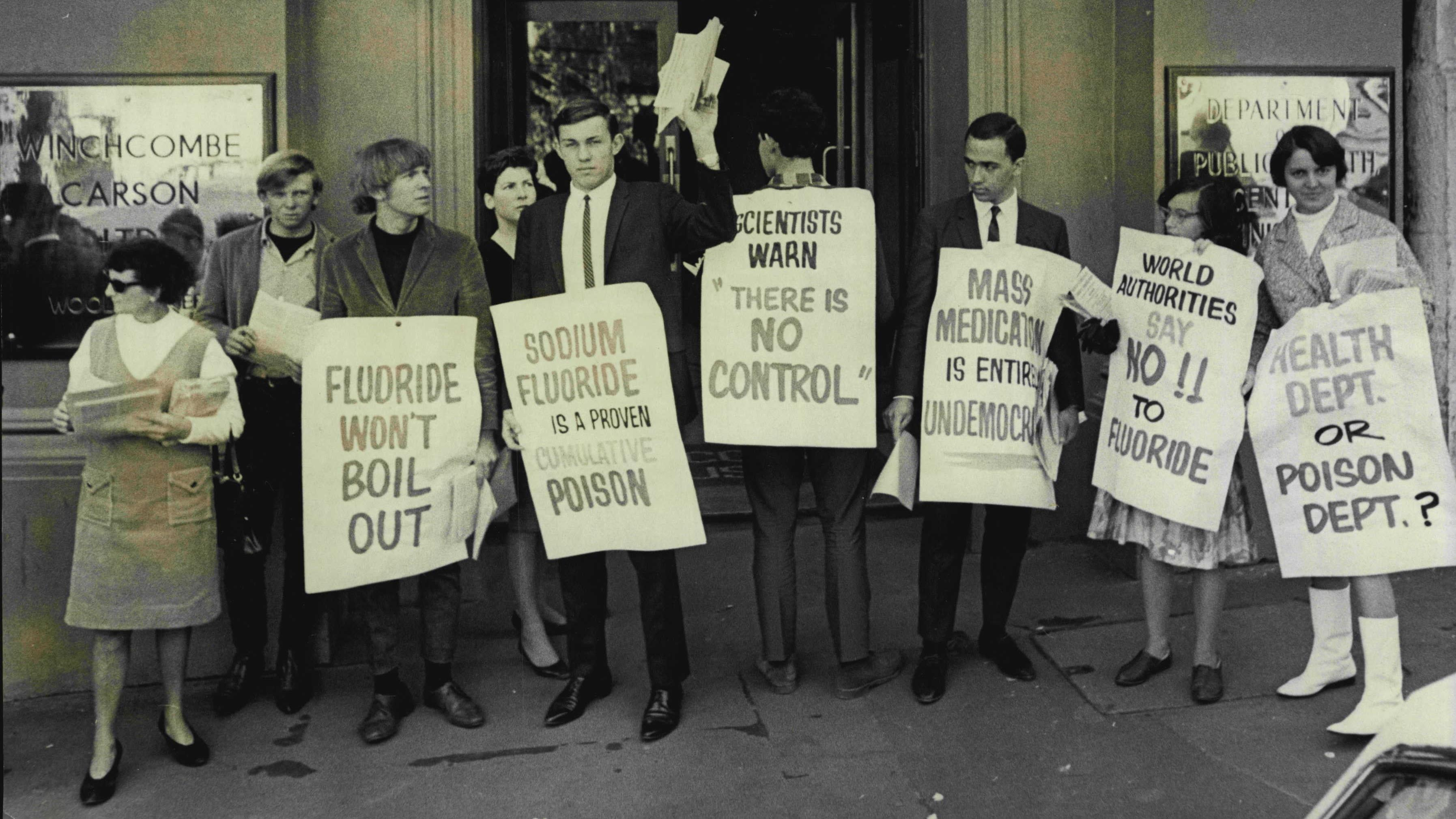9 Conspiracy Theories About Food That Aren't True (And One That Is)
Conspiracy is a dish best served cold. With a negroni.
Probing the intricacies of our food system is enough to make a conspiracy theorist of even the most level-headed consumer. Between Big Agriculture, Big Pharma, Big Fast Food, and Big Seltzer, it's hard to take a neutral approach to the very necessary act of eating. While we encourage you all to move through the world with a healthy dose of skepticism, we advise against embracing these less-than-savory conspiracy theories about the underbelly of the food world.
The devil dines at Outback
If you've ever supped on a Bloomin' Onion, you know the mystical power of Outback Steakhouse. One bite of that Alice Springs Chicken Quesadilla and you're transported to devilish, carnal realms unknown. It's almost as if Beelzebub himself were behind the recipe development.
That's the idea behind the Outback Steakhouse Satanic Cult, a joke conspiracy that popped up on Twitter back in 2017. According to Know Your Meme, a Twitter user tweeted an image that highlighted several Outback Steakhouse restaurant locations on a map. The user had connected the locations with a series of lines, forming a shape that looked suspiciously like a pentagram. "Wtf is Outback Steakhouse planning," the user wrote.
Warheads have lost their sour edge
Last year, we became aware of a contingent of candy conspiracists who are convinced that Warheads candy parent company Impact Confections has softened the candy's tear-jerkingly sour formula. You can find the claims all over Reddit, Facebook, and Twitter (search Twitter for "Warheads less sour" and you'll find dozens of results). We explored the conspiracy to the best of our ability—but you'll have to draw your own conclusions on this one.
“New Coke” sucked on purpose
Journey with us back to 1985. The hair is big, the hottest guy in school is blasting Duran Duran from his Chevy Cavalier, and Coca-Cola consumers are developing very strong feelings about the cola's new formula. At this point, Coca-Cola had been losing market share to competitors for years. The company drew on market research suggesting that consumers preferred the sweeter taste of rival Pepsi and reformulated Coke accordingly. Enter "New Coke," the informal name for what was undoubtedly the biggest flop in Coca-Cola history.
New Coke was a huge failure, so much so that the "new" formula was eventually discontinued. The frankly appalling taste of the product lent itself to a fizzy conspiracy theory: that Coca-Cola had intentionally changed the formula to something crappy, hoping consumers would build buzz around the original formula and cause sales to spike when the OG formula returned. Snopes debunked this one, citing Coca-Cola president Donald Keough who replied, "We're not that dumb, and we're not that smart."
Saboteurs made Chipotle customers sick
Not long ago, Chipotle became a veritable norovirus buffet. The outbreak sickened more than 100 Chipotle customers in Virginia—but it also fueled the already robust conspiracy ecosystem surrounding the fast casual chain. Namely, that Chipotle is a singular target of ongoing corporate sabotage.
The conspiracy theory first emerged in 2015, after Chipotle's 14-state E. coli outbreak. At the time, conspiracists argued that the outbreak was intentionally orchestrated by individuals with financial stake in the company. "Chipotle short-sellers saw their ambitions rewarded with $55 million in less than one day, thanks to this most recent incident," restaurant consultant Aaron Allen wrote in a LinkedIn post that was shared by Bloomberg. In the post, Allen suggests that short-sellers—parties who stood to gain financially if Chipotle shares dropped—planted the bacteria.
Another theory, outlined on conspiracy website Natural News, involved biotech industry saboteurs. "Chipotle's E. coli outbreaks are not random chance," the author wrote in late 2015. "They are the result of the biotech industry unleashing bioterrorism attacks against the only fast food company that has publicly denounced GMOs."
Both claims are far-fetched. But, hey, the corporate world is full of sabotage. You've seen Succession, right?
We’re all at the mercy of Big Fondue
Behold, a real-life conspiracy that's stranger than fiction. You know fondue, the dipping cheese that exploded in popularity in the 1970s? Its popularity wasn't an accident—it was the result of a carefully calculated marketing campaign led by a Swiss cheese cartel known as Schweizerische Kaseunion.
The cheese organization was in charge of the manufacturing and marketing of several popular cheeses, including Emmental and gruyere, both of which are easily meltable. While the cartel didn't invent fondue—that happened much earlier, perhaps as early as the 1600s—they did promote the use of these cheeses heavily at the expense of other Swiss cheeses that weren't as readily meltable, essentially manufacturing the "fondue craze" to serve their own cheesy interests.
The packaged-hot-dogs-to-buns paradox
Hot dog buns (sold in packs of 8) are rarely used for anything but hot dogs (sold in packs of 10), so why wouldn't the packaging go together seamlessly? Corporate greed, some argue, declaring that the Bun Brigade (not real) and National Hot Dog and Sausage Council (real) have teamed up to ensure consumers fall prey to an endless cycle of buying more buns to fit the hot dogs, then buying more hot dogs for the leftover buns, on and on until we die, while Big Barbecue laughs all the way to the bank.
The real reason for the discrepancy isn't quite as sinister, but no less annoying. Mental Floss gets to the bottom of the issue, citing difference in industry standards as the main culprit. Since the 1940s, hot dogs have been sold in packs of 10 because at 1.6 ounces per dog, 10 was the ideal distribution to sell by the pound. Bakers, on the other hand, more often than not deal in dozens, and therefore set a four-roll tray standard for mass production. Essentially, this is they way they've always done things and they're not going to change now—and if these companies make a little more money in the process, I'm sure they're not mad about it.
Human fetuses in food?
Back in 2012, the Oklahoma Legislature introduced a bill that would outlaw "the manufacture or sale of food or products which use aborted human fetuses," NPR reported. Sounds reasonable enough, but the introduction of the measure ignited a fervor of folks wondering, "why exactly do we need this law?" It's like when you see a sign that says "DON'T STICK YOUR HAND IN THE LOBSTER TANK," which indicates that at one point someone definitely stuck their hand in the lobster tank. Who in Oklahoma was using a dash of fetus in their cooking?
It's a little more nuanced than that. The Republican (of course) senator behind the bill, Ralph Shortey, told Tulsa radio station KRMG that "his research" (reliable) showed that some companies in the food industry were using human stem cells for research and to develop products like artificial flavoring.
NPR reporter Bill Chappell traces this tidbit back to an accusation that the now-defunct company Senomyx was using Human Embryonic Kidney 293 (a widely available cell line that was originally cultured in the early 1970s from a human embryo in the Netherlands) in development of a no longer used "sweetness enhancer," which would later face scrutiny of its own completely unrelated to the potential use of fetus. Long story short, it's safe to assume you are not accidentally eating human embryos and probably never have.
Fluoride is poison that will turn everyone into Communists
The war against fluoride dates back to 1945 when a powdered version of the stuff was introduced to the water supply in Grand Rapids, Michigan. Before even drinking fluoride water, residents began complaining about sore gums and peeling tooth enamel, instilling doubt in the project. But it was popular culture that perpetuated the conspiracy theory that the government was poisoning us all in order to have control.
In 1964's Dr. Strangelove or: How I Learned to Stop Worrying and Love the Bomb, Sterling Hayden's General Jack Ripper calls fluoridation the "most monstrously conceived and dangerous Communist plot we have ever had to face." Though the movie itself is now a classic example of satire, that idea was latched onto by anti-Communist groups who used the sentiment as a sort of slippery slope argument: If it was this easy to slip us fluoride, what's next? That soon evolved into "we're already being fed mind-controlling poison."
While there have been some warnings to come out against too much fluoride in the years since, as recently as 2019 fluoride researchers told BuzzFeed News that the onslaught of conspiracy theorists made conducting conclusive studies nearly impossible. But we do have enough science to say that, no, your fluoride toothpaste isn't turning you into a Communist. Then again, maybe that's just what the government wants us to think.
Tim Hortons hooks us with nicotine-laced coffee
Tim Hortons has kept its beloved signature coffee blend secret for years, guarding the proprietary formula to the degree that it had people asking, "what are they hiding?" Various rumors began declaring that the highly addictive nature of the brand's coffee could only mean one thing: nicotine.
While some folks guessed that nicotine in the coffee grounds was the secret ingredient the company was keeping so close to the vest, others suggested it was just that the coffee filters or to-go cups were laced with the additive. But in 2003 Snopes debunked this urban legend altogether, saying, "Tim Hortons doesn't secretly add nicotine to their coffee to make it addictive to customers, and neither does any other coffee chain in Canada or the United States." Phewph.
Chuck E. Cheese is recycling pizzas
Chuck E. Cheese has never been known for having the greatest pizza, and most people are content to let the unattractive appearance of the pies slide. But photos all over the internet show Chuck E. Cheese pizzas that look somehow cobbled together, with the crusts of each slice not matching up to form a perfect circle, jutting out every which way. In 2019, The Washington Post reported on the phenomenon, citing two Yahoo Answers pages (since deleted) suggesting that these were not whole fresh 'zas but instead uneaten pieces from other orders that have been reheated and reassembled to sell as a brand new pie.
Chuck E. Cheese released a statement saying, "No conspiracies here—our pizzas are made to order and we prepare our dough fresh in restaurant, which means that they're not always perfectly uniform in shape, but always delicious." But now that the conspiracy theory has taken on a new life over on TikTok, we might just have to reach out to Mr. Charles Entertainment Cheese for comment once again.
